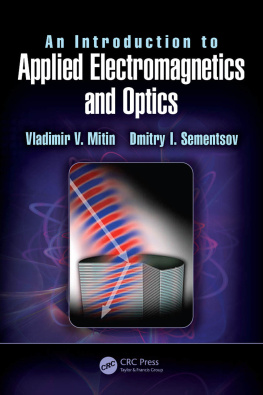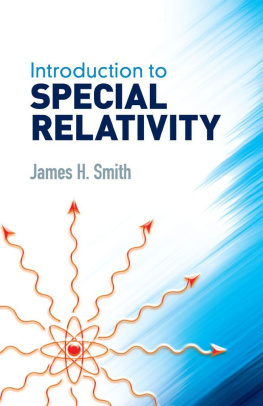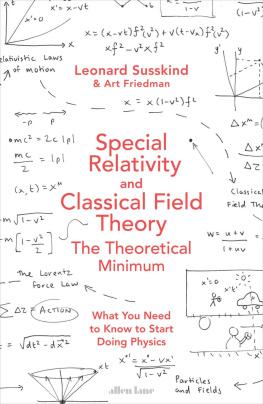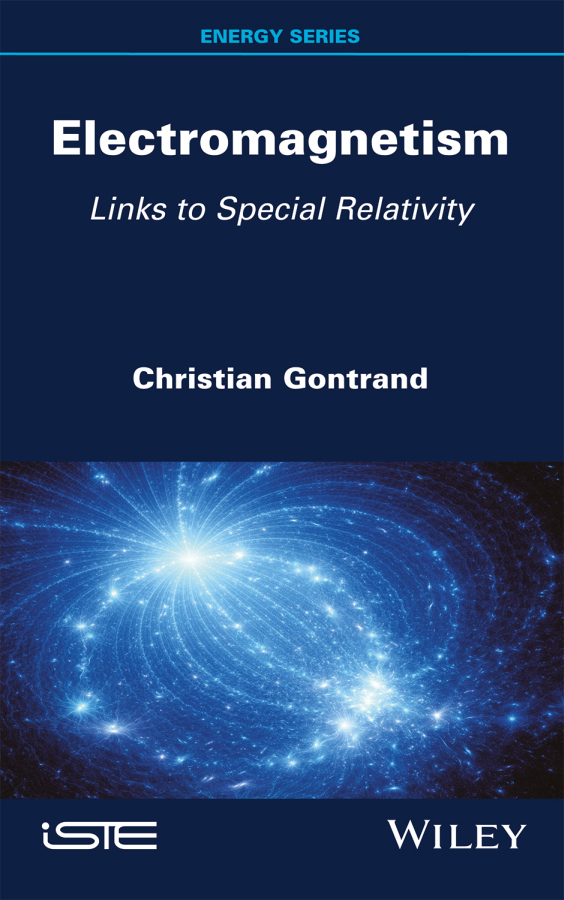
Electromagnetism
Links to Special Relativity
Christian Gontrand

First published 2022 in Great Britain and the United States by ISTE Ltd and John Wiley & Sons, Inc.
Apart from any fair dealing for the purposes of research or private study, or criticism or review, as permitted under the Copyright, Designs and Patents Act 1988, this publication may only be reproduced, stored or transmitted, in any form or by any means, with the prior permission in writing of the publishers, or in the case of reprographic reproduction in accordance with the terms and licenses issued by the CLA. Enquiries concerning reproduction outside these terms should be sent to the publishers at the undermentioned address:
ISTE Ltd
27-37 St Georges Road
London SW19 4EU
UK
www.iste.co.uk
John Wiley & Sons, Inc.
111 River Street
Hoboken, NJ 07030
USA
www.wiley.com
ISTE Ltd 2022
The rights of Christian Gontrand to be identified as the author of this work have been asserted by him in accordance with the Copyright, Designs and Patents Act 1988.
Any opinions, findings, and conclusions or recommendations expressed in this material are those of the author(s), contributor(s) or editor(s) and do not necessarily reflect the views of ISTE Group.
Library of Congress Control Number: 2022943104 British Library Cataloguing-in-Publication Data
British Library Cataloguing-in-Publication Data
A CIP record for this book is available from the British Library
ISBN 978-1-78630-781-1
Preface
This book is primarily intended for undergraduate students of science. The first reading can only be done using the boxes/sheets, if possible those associated with a lecture course of about 20 hours. It is aimed in particular at increasing the number of courses, which reflect the increasingly untimely use of s.phones or other things, whose days are numbered.
In doing so, this reading is necessary and sufficient to continue advanced technical training, such as engineering or masters.
Moreover, this book, in its entirety, does not aim to play the role of a whole, but aims to give a certain perspective on this field, i.e. electromagnetism. Hence, it discusses special relativity. Indeed, the latter is intrinsic to electromagnetism; it will not introduce, for example, paradoxes that are not. Finally, this book discusses some limits of classical mechanics; an incision, invoking quantum mechanics, is introduced, alluding to problems encountered, in particular, when phenomena related to the propagation of electromagnetic waves occur, which even the greatest scientists of the last hundred years were not able to overcome.
Below we mention many colleagues, but the list is certainly not exhaustive; teaching teams are the structural basis of teaching in propedeutics. Our teaching and responsibilities have mainly been established in the international courses of the INSA, Lyon: EURINSA, composed of half French and half European students; AMERINSA, composed of half Latin American and half French students, as well as the classical undergraduation, historic channel.
Marcel Lambinet, Grard Hepp, Ren Vasoilles, Jean-Claude Dupuis, Gilbert Travin, Gilles Prudon, Philippe Guy, Vincent Wiedemann, Serge Cioulachtjian, Carole Plossu, Vronique Massardier-Jourdan, Latifa Fakri-Bouchet, Richard Feynman, Paul Merle, Catherine Verdu, Sophie Casanova, Francis Calmon, Cedric Galizzi, Daniel Babot, Brice Gautier, Nicolas Baboux.
This book was supported by the UEMF, INSA and the Union for the Mediterranean (French: UpM).
August 2022
Magnetic Field
1.1. Overview of history
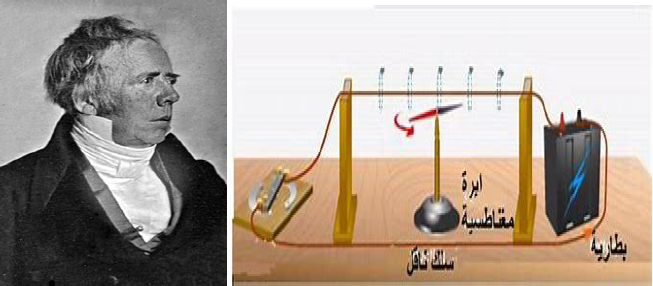
Figure 1.1a. rsted and his historical experiment
In April 1820, during a class on electricity for his students, rsted discovered the relationship between electricity and magnetism.
He showed, through an experiment, that a wire carrying current was capable of moving the magnetized needle of a compass (another version: one of his students would have made this observation during a practical session). rsted did not suggest any satisfactory explanation of the phenomenon, nor did he attempt to represent the phenomenon in a mathematical framework. On July 21, 1820, however, he published his experimental results in a four-page article entitled: Experimenta circaeffectum conflictus electrici in acum magneticam. His writings were translated and disseminated to all European scientific communities, and his results were strongly criticized.
For a color version of all figures in this book, see www.iste.co.uk/gontrand/electromagnetism.zip.

Figure 1.1b. Andr-Marie Ampre took note of these results in September 1820 and quickly (within a few weeks) developed (Polymieu, Rhne, 30 km from Lyon) the theory that would allow the emergence of electromagnetism
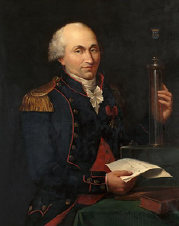
Figure 1.1c. Charles-Augustin Coulomb: 17361806
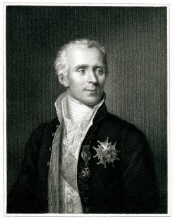
Figure 1.1d. Pierre Simon de Laplace: 17491827
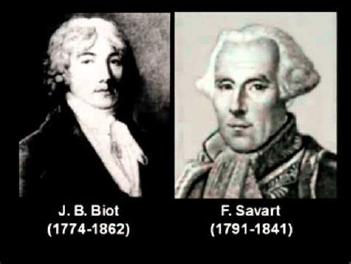
Figure 1.1e. These two men initiated measurements on magnetic fields (1820)
In the 4th century BC, the properties of magnetite, which attracts iron filings, were cited and reported by Thales of Miletus (Greece), as well as in China from the 3rd century BCE where these minerals were called tzhu shih or loving stones (aimants). Pliny the Elder (1st century, Rome) knew that this property could be transferred, by influence, to a piece of iron.
For several centuries, nothing was added to the knowledge of these phenomena. It was the spread in the West, in the 12th century, via the invention of the compass, due to the Chinese about two centuries before, which aroused new interest for the latter. The rediscovery in the West of the magnetic declination (deviation of the needle of a compass from the geographical North) is attributed to navigators contemporary to Christopher Columbus (1492). Fundamental notions for describing the properties of magnets were introduced by Pierre de Maricourt (1269), who discovered the concept of poles and therefore of the dipole nature of magnets. Decisive progress was made by William Gilbert in his book De Magnete (1600). Gilbert draws a clear distinction between the attractive properties of magnets and the forces of electrostatic interaction. He describes the properties of magnets, the phenomena of magnetization, as well as Earths magnetic field.
Next page




